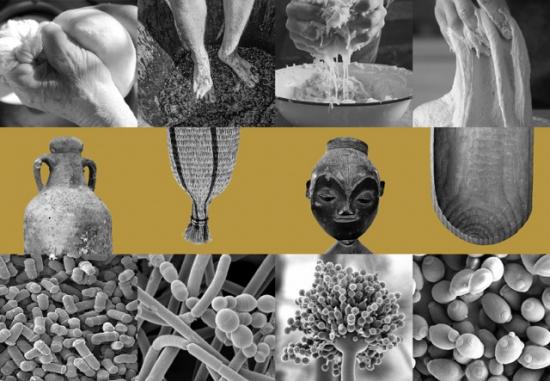End Date: Saturday, March 14, 2026

Although microbes are the most abundant and diverse organisms on our planet, anthropology has paid little attention to the complex web of interactions between humans and these largely inconspicuous, yet influential living beings. Growing interest in the evolutionary dynamics of humans and microbes, advancements in research methodologies, and the emerging field of ethnomicrobiology are shedding new light on the symbiotic creativity of human and microbial cultures.
Perhaps the most visible and enduring manifestation of human-microbe relations is fermentation. A universally adopted technique, fermentation has been employed for millennia in the creation, enhancement, and preservation of all manner of foods and beverages. People across the world and throughout time have developed specialized tools, containers, facilities, and processes to make fermented products from local varieties of fruits, vegetables, tubers, legumes, grains, meats, seafood, and dairy. Countless human cultures have embraced traditional fermented foods and beverages as integral expressions of identity and kinship, and employ them in communal rituals, as social lubricants, healing elixirs, and conduits to the divine.
Drawing from the Maxwell Museum’s collections, Entangled Cultures presents diverse global examples of traditional vessels used in the creation and consumption of fermented foods and beverages. The exhibit begins with an overview of how fermentation likely served as a catalyst for human ancestors to develop smaller digestive systems, larger brains, and ultimately expand into new environments. It also retraces the origins of many now ubiquitous ferments, such as wine, beer, bread, and cheese. Reflections on the ever-changing nature of human-microbe relations are woven throughout the exhibit, which concludes with a peek into our fermented futures, including novel adaptations to climate change and possibilities for interspecies flourishing in the post-Anthropocene world.
Opening Reception: Please join us on Saturday, March 8, 2025, from 2 pm to 4 pm for the opening reception. A wide selection of fermented foods and beverages from local producers will be available to sample.
Contact: For media inquiries, please contact the Maxwell Museum’s Curator of Public Programs Julián Antonio Carrillo (jac123@unm.edu), or Curator of Exhibits, Toni Gentilli (tgentilli@unm.edu).
Share your fermentation recipes with us to create a community cookbook!